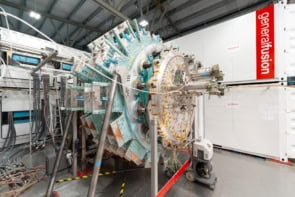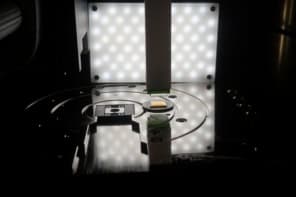The international ATRAP collaboration has measured the velocity of slow-moving or "cold" antihydrogen atoms for the first time. ATRAP is one of two experiments at CERN's antimatter decelerator that hopes to capture large numbers of cold antihydrogen atoms in a trap. The anti-atoms captured by the ATRAP and ATHENA teams could be used for a variety of experiments in fundamental physics, including the most accurate ever test of CPT symmetry (G Gabrielse et al. 2004 Phys. Rev. Lett. 93 073401).

The ATRAP collaboration, led by Gerald Gabrielse of Harvard University, first produced antihydrogen atoms from antiprotons and positrons in 2002. By using a series of magnetic and electrostatic cooling traps, the team was able to produce about 170 000 antihydrogen atoms. However, the energy, velocity or temperature of the anti-atoms were not measured at the time — it was simply assumed that they were at the same temperature (4.2 K) as the apparatus used to confine the antiprotons and positrons.
In their latest experiments Gabrielse and colleagues started by producing antihydrogen atoms as before. Next, they applied an oscillating electric field and counted the fraction of anti-atoms that passed through the field as the oscillation frequency was increased (see figure). Atoms moving too slowly were ionised before they could cross the field and therefore did not reach the detector. Faster atoms, on the other hand, could pass through if the field was too weak to ionise them.
The ATRAP team calculated that any anti-atoms that managed to reach the detector had energies of about 200 millielectronvolts, which meant that they were travelling around 20 times faster than the antiprotons used to produce them. The group speculate that this relatively high speed is due to the fact that they could only measure the most weakly bound anti-atoms, which may have had less time to cool.
The ultimate goal of such experiments is to trap cold antihydrogen atoms in their ground state and compare their atomic structure with that of ordinary hydrogen. Studying the transition from the ground to the first excited state in particular would allow scientists to perform the most accurate tests of CPT (charge-parity-time) symmetry. Any violation of CPT symmetry would require new physics beyond the Standard Model of particle physics.



